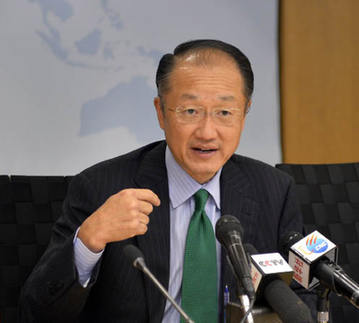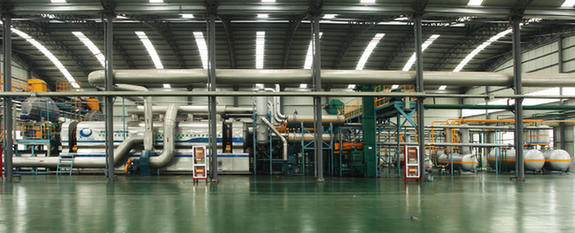Will Asian Infrastructure Investment Bank Become a Reality?
 |
|
Kim Yong Jim, president of the World Bank, welcomed China’s proposal to establish the AIIB. |
Necessary Competition
The forthcoming AIIB and the long-existing ADB have many overlapping functional orientations as regards providing assistance for Asian developing countries in infrastructure construction.
As is universally known, China’s economic growth is inextricable from follow-up infrastructure. Indeed, a considerable number of China’s infrastructure construction projects over the past years, such as railways, highways, and environmental protection facilities, have been financed by ADB loans.
What should be borne in mind, however, is that although ADB serves Asian countries, its shareholder composition is complicated. Japan and the U.S. are two principal ADB shareholders. Others include a number of developed countries. At present, Japan, the U.S., Eurozone countries, Australia, and New Zealand jointly own 50.6 percent of ADB’s voting power. It is consequently hard to judge whether or not ADB milestone decisions embody the actual needs of developing countries, let alone enable more of them to benefit from APEC’s development.
In the current world economic pattern, developed countries headed by the U.S. may still be the main players, but their unilateral predominance faces a challenge. Or at least, the world economy leadership is due for reelection. As the world’s second largest economy and largest trading nation, China stands a fighting chance of membership in this leading group. At present, China’s ADB shareholding is 6.429 percent, as compared with the 15.571 percent each of Japan and the U.S. China also has only 5.442 percent of voting power. But neither China’s ADB shareholding ratio nor voting power fully reflects the country’s economic status. China’s proposal to establish the AIIB originates in deep-rooted deliberations on offering a fresh financing option for Asian infrastructure construction. It is, moreover, conducive to changing the situation where the same handful of developed economies in APEC calls the shots.
Inevitably, when established the AIIB will compete with the ADB, and may even challenge the status of the World Bank. In my opinion, this is not a bad thing. At least it would force the ADB and the World Bank to focus more on the legitimate demands of the vast numbers of the world’s developing countries. Using credit arrangement as bait, the two entities often make irresponsible remarks about such countries’ economic structure. In dealing with the relationship between the AIIB and the ADB, the ideal situation would be one where each has its respective emphases along with mutual cooperation. This requires all parties concerned to strengthen communication and broaden their horizons.

